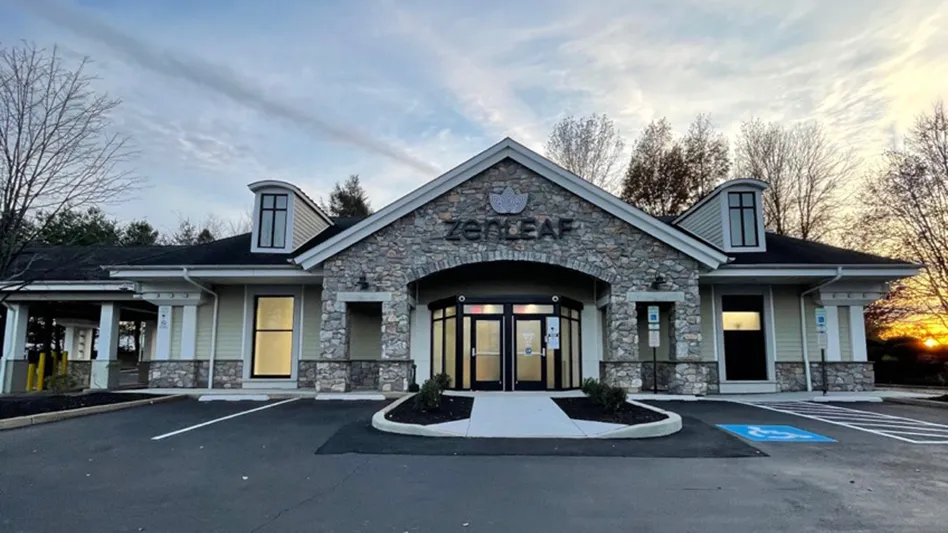
Adobe Stock
As the cannabis market continues to experience contraction and consolidation, cannabis cultivators who have navigated choppy waters might find themselves in an enviable position to grow their market share by expanding their operations.
Scaling a cultivation facility is not just about getting bigger—it also is an opportunity to review systems and practices with an eye for sustainability and resource efficiency. For most growers, the biggest expense after labor is energy. By building (or scaling to) an efficient operation, cultivators can do more with the same or fewer inputs. Cannabis cultivators who can maximize production while minimizing their energy, fertilizer, and water needs will not only reduce their carbon footprint, but the input savings can have important positive impacts on their company’s bottom line and long-term financial success.
There are many moving parts to an expansion project. Here, expert Resource Innovation Institute members help break down the efficiencies cannabis growers can consider when scaling or optimizing their cultivation systems and practices, and identify best practices to ensure a smooth, cost-effective upgrade.
Engage Stakeholders Early
Any project that sees cultivation activities expand, or that changes systems or processes, needs every stakeholder’s input, including architects, engineers, lead cultivation staff and consultants. Lauren Morlino, a technical manager at Evergreen, a customer-focused consulting firm that helps utilities create programs for grid management and energy efficiency, says utilities are often forgotten in those early conversations.
“It's a little counterintuitive, especially for cannabis growers who have sometimes hidden from their utility company, but operators should reach out to the utility company early and often,” Morlino says, adding that more savings and incentives will be available to help reduce capital expenditures the earlier utility partners are involved in the project.
“Operational energy savings paired with utility incentives help growers pay off larger investments quickly, like thermal curtains in a greenhouse, or LED grow lights in a supplemental or sole-source lighting scenario,” Morlino notes. “Efficient, high-quality technology is available today, and growers don't want to miss the opportunity to leverage utility incentives and technical assistance.”
Cannabis cultivators who are hesitant to make the jump to LEDs need to keep in mind that cannabis prices (both wholesale and retail) typically only trend in one direction: down. The only way to remain competitive in an environment where prices cannot be raised is to reduce operating costs such as operating lighting fixtures. “If your competitor is spending 40% less in energy than you are every day, you are at a severe disadvantage,” Morlino notes.
Utilities are always striving to normalize energy loads and reduce overall grid demand. Through their energy efficiency programs, they provide rebates to businesses willing to help them reach their goals. By engaging with utilities early, cannabis cultivators can develop an investment plan that works for their operation’s budget. For example, a grower looking to test different LED lighting fixtures to find the one that works best for their operation can unlock rebates by engaging their utility before the research and development project begins, Morlino explains.
“If growers are interested in getting a rebate for five fixtures that they are trying out, some utilities will allow you to do that, while others have rules that stipulate you are not allowed to phase projects like that. So, again, reach out to your utility company and ask what programs or rebates you are eligible for,” she says, as utilities often won’t be able to offer retroactive rebates for systems growers purchased without consulting them.
Utilities can also inform cultivators about light fixtures that have been pre-approved for rebates and incentives. In many cases, utilities rely on third-party vetting from groups like the DesignLights Consortium (DLC), a nonprofit organization that collaborates with utilities, energy efficiency programs, manufacturers, lighting designers, building owners, and government entities to create evaluation criteria for lighting performance. (The DLC recently updated its technical requirements for its horticultural lighting Qualified Product List (QPL).)
Morlino says utilities are still offering significant incentives to cannabis operators looking to switch to LEDs, efficient HVAC, and other grow equipment because the energy savings remain significant. However, “as energy baselines become more efficient, then utility incentives will go away,” she notes.
Control What You Can
The biggest change operators need to consider when scaling their operations is the extra space. That added area impacts everything from temperature, humidity, ventilation and lighting.
But a scaling project that doubles an operator’s canopy size does not necessarily require a doubling in environmental control systems capacity. By tightening control over the environment, cannabis cultivators can improve their resource use with minimal capital expenditure. One way to tighten control is to increase monitoring capabilities across key facility operations.
For example, by adding temperature and humidity sensors in the facility, cannabis cultivators can better identify issues that can potentially be resolved with better airflow rather than increased humidity and temperature control. When managing heat loads in a cannabis greenhouse, for example, RII member Paul Arena, a greenhouse climate consultant with Ludvig Svensson, says operators “have to think about what that heat is doing, how it's moving within the greenhouse, and how they can make the best use of it so that they are not wasting it,” with the goal being to use “every single piece of energy within the greenhouse to their advantage.”
Accounting for how heat rises and cold sinks, vertical airflow systems can recirculate the hot air beneath the canopy, better homogenizing temperatures and humidity levels across the facility.
Arena suggests cultivators conduct smoke tests in their facilities to identify areas that may be experiencing poor airflow. “You can go into a greenhouse and blow a smoke machine (with a plant friendly, water-based solution), which will allow you to see where the air is physically getting stuck and where it is moving a bit too much. That's how you determine how to make a homogenous climate,” without having to completely replace existing systems, he says.
That said, there also are situations where systems do need to be upgraded. In those cases, “the wisest decision you could make is going for the most energy-efficient products you could get within your budget,” Arena says. Much of the capital cultivators spend on system upgrades can be made back with operational expense savings over time (in addition to any utility rebates).
Consider Efficiencies Beyond Lights and Environmental Controls
When considering energy management, cannabis cultivators often focus their attention on their most energy-intensive processes, which typically are lighting and space conditioning. But Morlino advises cultivators “take a holistic view at your facility, not just your cultivation spaces.”
When looking for energy-saving opportunities, cultivators also should consider whether efficiencies can be found in drying rooms, refrigerated storage, commercial kitchens, packaging facilities, and laboratories. “Those are all sub-spaces that usually exist on the same site or in the same building as cultivation, but they're often overlooked,” Morlino says. If refrigerators, freezers, or walk-in coolers are present, check unit age, seals, insulation, and temperature sensors for optimum performance, or upgrade to a more efficient unit where possible.
Ambitious cultivators with a passion for sustainability can consider on-site renewable energy. Morlino says that while such projects often hit a dead-end due to budgetary constraints, some utilities will collaborate with businesses that want to install on-site solar, for example. “Utility appetite for adding renewable energy to the grid is very location dependent, and cannabis businesses should proceed with caution, as solar provider contracts can span over 20 years,” she notes, stressing that early conversations with utilities can expedite feasibility decisions.
Beyond energy, cannabis cultivators also should consider water-efficiency improvements during their scaling project. Significant labor and resource savings can be made by automating irrigation and fertilization activities. Additionally, by recapturing, recycling, and reusing water throughout the facility–essentially closing the loop on water waste–cultivators also can find savings. Studies conducted in recent years have shown that recirculating irrigation water can reduce water and fertilizer consumption by up to 40% and 50%, respectively, with an average system ROI of only two years from reduced fertilizer costs alone.
Growers need to consider how they “can use as much natural recycled resources that they can, like recycling their water,” Arena says. Rainwater catchment systems also can present savings opportunities if the property is conducive to those activities. “A lot of greenhouses have retention ponds so that they never have to use municipal water,” Arena notes.
Scaling your cannabis cultivation facility isn't just about growth: it's about growing better and smarter. By prioritizing resource efficiency and sustainability, cannabis cultivators can minimize their impact on the environment and gain a competitive edge in the industry. By embracing precision cultivation techniques, managing energy wisely, conserving water, tackling waste head-on, and collaborating with others to set new benchmarks for sustainability in cannabis cultivation, cultivation business operators can create a sustainable future for the industry.
Robert Eddy, M.S., is Resource Efficiency Horticulturist with the Resource Innovation Institute.
Latest from Cannabis Business Times
- Key Takeaways From USDA's 2024 Hemp Report
- Cannabis Rescheduling: Where Do We Go From Here?
- Verano Opens MÜV Haines City, Company’s 75th Florida Dispensary
- Ascend Wellness Holdings Reports $142.4M Net Revenue for Q1 2024
- Trulieve Reports $298M in Revenue for 1st Quarter 2024
- SNDL Reports 1st Quarter 2024 Financial, Operational Results
- Leading Cannabis Brand STIIIZY Expands Retail Presence With Fresno Location Opening Saturday, May 11
- The Cannabist Co. Reports 1st Quarter 2024 Results





